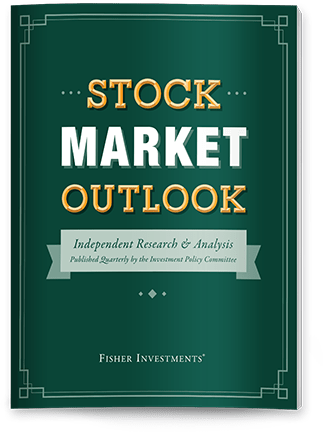Personal Wealth Management / Expert Commentary
3 Things You Need to Know This Week | US & Eurozone GDP, Central Banks, Global Trade (Jul. 28, 2025)

Fisher Investments’ “3 Things You Need to Know This Week” is a weekly segment designed to help investors worldwide sift through the noise across financial media and understand what really matters for markets.
This week, we're covering:
- US and eurozone GDP
- Monetary policy announcements in US, Canada, and Japan
- Upcoming tariff and trade deal deadlines
Transcript
Jessica Smith:
Hello, and welcome to 3 Things You Need to Know this Week— our regular series designed to help you sift through the noise across financial media and understand what really matters for markets.
To stay up to date with our latest market insights, subscribe to our YouTube channel or visit fisherinvestments.com.
And with that, here are three things you need to know this week.
First up, US & Eurozone GDP
On Wednesday, both the US and eurozone will release their initial estimates of Q2 GDP. US investors, in particular, will be paying close attention after the US economy shrank 0.5% in Q1, which has sparked fears of a possible recession. But under the hood, you'll see these fears are likely overblown. Q1's decline was largely caused by a surge in imports—which detract from GDP— as businesses stocked up on inventory ahead of anticipated tariffs. For Q2, markets expect nicely positive growth from the US economy. Across the pond, the eurozone is expected to report mild, but still positive, growth in Q2. This continues a positive trend for the European economic bloc, as GDP annualized growth was 2.5% year-over-year in Q1, powered by Spain and Italy. Now, if GDP numbers come in weaker than expected, it could bring recession worries back into the spotlight. But remember: GDP is backwards-looking— confirming what stocks already priced in and moved on. What's most important for stocks is where the economy is headed, not what it did last quarter.
Next, Monetary Policy Announcements
Several central banks are slated to announce policy decisions throughout the week, including the Fed, Bank of Canada and Bank of Japan. On Wednesday, we'll get a Fed policy announcement. It's still unclear whether the Fed will cut rates, but a rate cut could help steepen the yield curve, which would likely benefit the US economy. But so far, the Fed's been hesitant. To us, the more President Trump pushes the Fed to cut rates, the more Fed Chair Jerome Powell is incentivized to wait— protecting what some view as Fed "independence" from political pressure. That could mean more delays while we wait for the Fed to eventually cut rates. Meanwhile, steeper yield curves are likely more of a tailwind outside of the US, supporting our outlook for value-heavy European stocks leading this year. The Bank of Canada will also announce their policy decision on Wednesday and is expected to hold rates steady after cutting them in March. With Canadian inflation below 2% since April, it's unclear whether the central bank has finished its rate cut cycle. The final announcement this week comes on Thursday from the Bank of Japan, or the BoJ. Investors expect the BoJ to continue its hiking cycle, raising rates another 25 basis points, or a quarter of a percent. Since the BOJ started normalizing monetary policy last year, long rates have risen more than short, which is a return towards a more normal interest rate environment. This has given banks more incentive to lend and has coincided with a noticeable economic uptick. That could mean more delays while we wait for the Fed to eventually cut rates. Meanwhile, steeper yield curves are likely more of a tailwind outside the US, supporting our outlook for value heavy European stocks leading this year.
Finally, Tariffs & Trade Deals
This Friday marks the Trump administration's extended deadline for tariff deals, and there's plenty of speculation on what may happen if higher tariffs end up taking effect. While it's a risk worth watching, we think that there are several mitigating factors. For starters, the US already has several trade agreements in place, including with the UK and Japan. China's deadline to finalize a broader deal isn't until August 12th, and there's talk it may get pushed out further. Meanwhile, the majority of Canadian exports to the US are eligible for tariff exemptions under the 2018 US Mexico-Canada Agreement. Even if most tariffs actually do go into effect on August 1st, that doesn't stop countries from being able to negotiate tariff reductions later. Plus, there have been challenges in actually collecting tariffs so far. US Customs and Border Protection data through June show actual tariff collections have only come in at about 39% of projections. To us, there is still a wide gap between tariff fears and reality— a bullish mix for markets.
And that's it for this episode of 3 Things You Need to Know this Week.
For more of our thoughts on markets, check out This Week in Review, released every Friday. You can also visit fisherinvestments.com. Thanks for tuning in and don't forget to hit like and subscribe!

Where Might the Market Go Next?
Confidently tackle the market’s ups and downs with independent research and analysis that tells you where we think stocks are headed—and why.




